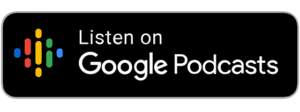That’s Not Coaching | 062
Welcome to Lean Leadership for Ops Managers, the podcast for leaders in Ops Management who want to spark improvement, foster engagement, and boost problem solving – AND still get their day job done. Here’s your host, Leadership Trainer, Lean Enthusiast, and Spy Thriller Junkie, Jamie V. Parker.
[00:00:29] Think of the iconic sports coaches, they are calling plays from the sidelines, and sometimes they’re yelling at their players. Other times they’re hugging their players and of course, they’re giving those inspirational locker room talks. But here’s my question for you when you say coaching, what do you really mean?
That’s the topic I’m diving into today, including what I mean by coaching. How my definition is different than the way the term is usually used and why it even matters. How do I use my definition to change actual leader behavior? And how can you learn from that and adjust your behavior and become better as well? That’s what we’re talking about, right? That is in coaching. All right, let’s dive in.
[00:01:31] Now, I was talking with Chris A., a plant manager about what was happening in his plant and leadership development. And he said, “You know, Jamie, I’m really working with my assistant managers right now. I’m trying to get them better at coaching in the moment.”
Here’s the thing. What he was really talking about was giving correcting feedback in the moment, right? Noticing something isn’t up to standard and correcting the situation in the moment instead of letting it fester. And to me, that’s not coaching, that’s correcting feedback, that’s giving direction. If you’re familiar with my Five Leadership Interactions Continuum, that’s directing. So it’s feedback and that’s not coaching.
I was in a client leadership team meeting, and the comment was made to an operations manager, “You need to give her a coaching on that.” And what they meant was a disciplinary conversation or a performance management conversation. You know, maybe like a written verbal right, a verbal conversation about the behavior, but it gets documented in the team member file. And to me, that’s not coaching.
That’s an H.R. process. And it’s really potentially risky in creating a culture where coaching is used in that way because it may result in people wanting to avoid coaching or fear coaching. And so, you know, is that good coaching or bad coaching? Right? So that’s really performance management and performance management documentation, and that’s not coaching.
I was with another client who recently promoted to team members to team lead roles. Kind of their first official supervisory roles, and the client, who’s an Executive Operations Leader in the organization, asked, “Well, how do I coach them on on this thing?” This particular responsibility and task that he wanted them to take over and to now do? And the thing is, though, they had never done it before. So what he really needed to do was to teach it first. And, you know, he didn’t want to be disrespectful and so he wanted to coach. But really, it needed teaching.
And I hear this on the floor when we asked team members to mentor new hires or to cross trained folks from other areas. And I hear people say like, I want you to coach them up, but what they’re really talking about is teaching. And teaching, well, that’s not coaching.
One more example I hear a lot when executives or managers talk to me about their one on ones, right? So they’re having a one on one with a leader on their team and they’re telling me what happened and walk me through the coaching they gave, right? So they have the whole story of here’s the problem the direct report was having, and here’s the advice I gave, and here’s what I told them.
And to me, that’s not really coaching. When you’re sharing your perspective, your opinion, your advice, what you did in the scenario, or how you think you would handle it, maybe what your last company did with the same problem. You’re doing what I call sharing. On the Five Leadership Interactions Continuum that’s sharing, right? So you’re telling them.
A lot of mentoring actually falls into this category where you have somebody that has expertise and they’re mentoring, they’re sharing or telling people, right, passing along all of your knowledge. And guess what? That’s not coaching.
Oh my goodness, you’re thinking, well, then what the heck is even left? Well, I’m glad you asked. So for me, you know, my understanding of what coaching really is comes from my experiences as a recipient of both life coaching and professional coaching, but also from my experiences as a student of coaching modalities.
[00:05:29] And to me, the biggest difference between coaching compared to the other interaction types (directing, sharing, teaching) is that with coaching the learner, the team member, the other person has the answers within themselves. And so we’re not trying to get them to a specific answer. We’re just helping them find their own answer.
ICF, which is the International Coaching Federation, actually calls coaching a thought-provoking and creative process. And I really see it the same way, right? So when you’re coaching, you are not the expert. You’re not giving advice. You’re really asking questions and listening. So, you might have exercises or activities that you want the team member or coachee to do with them to help with their discovery and learning process. But it really is all about, listen to this part, it’s all about the coachee, the team member, the learner learning, and deciding for themselves.
Oh, that’s the difference. Deciding for themselves. So what does that mean for us as operations executives and leaders? Within our context as operations leaders, the purpose of coaching is to develop the capabilities of others and specifically to do that by allowing them to learn through doing. So, giving feedback, it’s not coaching. Giving advice, it’s not coaching. Giving recognition, it’s not coaching. And teaching is not coaching.
Coaching is when we ask those thought-provoking questions, we check for understanding. We listen and allow the learner to discover and decide for themselves with the goal of developing the capabilities of the learner.
[00:07:30] So I want to help put this into perspective, and to do that, I’m going to talk about the Five Interactions of Leadership. So if you’re a visual learner, you can go to processplusresults.com/podcast and then find this episode and you can see a visual image of it. Or if you’re on a walk, you’re on a treadmill, you’re washing dishes. You can just like, listen in and imagine it, and I’ll describe it for you.
So imagine an arrow going from left to right like a continuum. So there’s this arrow on a left to right continuum, and on the far left, you have Directing. This is when you give direction, whether that’s the good stuff like reinforcing feedback and recognition, or whether it’s correcting feedback or maybe setting direction and sharing goals in KPI targets.
To the right of directing is sharing, this is what we talked about before, where you’re sharing your perspective or what you’ve seen others do or what you do in this situation, what you think their next step is.
To the right of sharing is teaching, and this is when we’re teaching new skills or capabilities to someone who doesn’t have them yet within the context of skill development, you need to teach before you can coach.
Then to the right of teaching is coaching and to the right of coaching is connecting. This is that empathetic listening where you’re making a deeper connection, you don’t have an agenda, you’re really there to connect and to listen and be present with the other person.
[00:09:03] Ok, so now you have this arrow from left to right directing, sharing, teaching, coaching and connecting. Now imagine an overlay of a continuum above that that is from telling, tasking, to listening. Telling covers most of it, because telling kind of goes over probably about all the way through directing and sharing and about two thirds of the way through teaching. Because directing and sharing are really telling, right? Even if it’s positive, even if it’s good, I’m telling you, even in teaching, I’m mostly telling you.
Yes, we start to get into two way interactions and you’re showing me and you’re telling me and all of that. And so we’re going to kind of not carry it all the way over. But it’s still mostly I’m the expert and I know how to do it, and I’m telling you how to do it right. And when I say telling, I mean telling, showing, teaching.
Now, when you get to coaching, coaching is mostly asking with some listening, and then connecting is pretty much all listening. All of that deeper, empathetic connecting listening. When you think about this continuum, directing, sharing, teaching, coaching and connecting, I want you to also think about it on this continuum from telling, tasking, to listening.
[00:10:25] Now here’s a thing as an Operations Manager, every single day, you’re going to do all five of these. In fact, in what you might typically call a coaching conversation, you may do more than coaching. You probably will.
Do you remember the episode I did a while back? I think it was maybe 54 or 55, and I talked about grasping the current condition, and I shared a statement that my coach, Andrea would use to transition from coaching to teaching. And so she would say, “The reason I’m asking this question is…” So she asked the question she’s in coach mode and I’m in learner mode, and then she’s ready to transition to teaching to make a point.
And she says, “The reason I’m asking this question is…”, and that’s exactly what normally happens in our interactions with teams. With our team members, we don’t typically have what you would consider or what ICF would consider a traditional coaching conversation where you stay in the role of coach the entire time and they stay in a role of discovery and decision the whole time.
And so when I think about coaching and when people use the word coaching, I think most people use it as this big umbrella that covers that whole continuum that covers everything from telling to asking to listening that covers all of those interaction types that cover the yelling to the play-calling to the inspirational locker room chats, right? And in my mind, coaching is a very specific skill that you develop and that you use in tandem with these other skills, these other interaction types in order to lead.
[00:12:09] So to me, the big umbrella is leadership. The big umbrella is development and then coaching falls within that. So why does it matter, right? Why do I separate these out? What’s the point of separating it out? If you’re going to do more anyways? Like, who cares? It’s just words.
Well, here’s the reason is that this is a great way, and so far it’s the best way I’ve found to help leaders get really intentional about how they want to show up. Because once leaders really learn the differences between these interaction types, then they start to pay attention to what they’re actually doing. They learn just how much telling they’re doing. And then they can start to choose in advance and build those skills. Because what will usually happen is they’ll realize that they’ve got some skill gaps in some of those, and so they’ll build some skills.
They’ll get better at some skills and then going into a one-on-one, or having a conversation with a team, or joining the Tier One Start Up Meeting, or doing a Gemba walk, they say, what’s the primary interaction type you want to have. And you get to decide in advance and then work deliberately on staying in that place and doing that more effectively.
[00:13:24] And to learn how to transition smoothly, like my coach Andrea did, to transition smoothly between those different roles in the same conversation. So this is a lot of what the work that I do with leadership teams and improvement practitioner teams is developing their skills within these. Helping them become more aware, helping them be more intentional and helping them kind of navigate the waters and move between them.
I do have some great news on this front, by the way, so I’ve got your next step. But before I give you your next step, you know, for a couple of years, I’ve had requests about one on one leader development from individual contributors and individual leaders. And, you know, usually people like, Hey, I need some coaching. What you just learned is it’s not really just coaching, it’s coaching plus. It’s all of the development.
But until now, I’ve really let folks know that I really just do that one on one leader development within organizational engagements. So when I work with a leadership team, training them on their skills and helping them build their systems, there’s some one on one development activities that are included. But for the one off individual, one on one development, that just hasn’t really been a part of my practice. I love working with leadership teams. But recently, the requests for this have actually increased. And you know, I started doing some thinking I took me some time, right?
I took some time and did some reflection of my own and really thinking about how I want to serve, what are my values, what’s important to me, what’s the business model? I want to have all of that stuff. And I figured out that I actually could accommodate a few of these one-on-one development clients.
I just onboarded my first one, by the way, we’re having a blast. So if that’s something you’re interested in, you can book a call on my website, which is processplusresults.com. But here’s what I want you to know. Like, this isn’t for the casual I want to dip my toe in it. This is an investment of time, investment of energy, and investment of money for you to really develop your leadership skills or for your company to invest in you. And so it’s not for the faint of heart.
It’s not just for anybody, it’s really for a very targeted person who’s really ready to do the work. Now you don’t have to work with me directly to apply everything we’ve talked about. This podcast exists because one of my values from the very beginning of starting my company was accessibility. I want managers to have access to resources to help them improve. So you can apply everything that you’ve learned from this episode starting now because this is what you need to understand, right?
And so here’s really your one next step is to pay attention in your conversations, in your interactions.
[00:16:12] Remember, leadership happens in interactions between people. So pay attention to your interactions. And how much of your interaction do you spend on the telling side of the continuum versus the asking versus the listening? And remember, when we talk about asking, we’re really talking about good coaching questions, those thought-provoking coaching questions.
We’re not talking about fact-finding diagnostic questions that you would just go through in your normal day to day. We’re talking about those thought-provoking questions that keep the learner in the discovery and the decision space. So telling, asking, listening.
What percentage of your time are you spending telling? What about listening? So is it 90 percent telling? Is it 80 percent telling, 70 percent? And how does that compare to what you want it to be the type of leader that you aspire to be? What do you think they would be at? Mm hmm.
I really cannot wait to hear what comes up from you. For you on this, so head over to the podcast page or to LinkedIn and let me know at a comment. Drop a note, an email in some way. Let me know what comes up for you as you start to really pay attention. How much telling do you currently do? Until next time.













